Product Liability
New Jersey Product Liability Lawyers
Products should not harm users when used properly. If they do, though, New Jersey law allows injured victims to pursue product liability claims against anyone within the supply chain.
These claims are not easy to resolve. Manufacturers and their insurers have the resources to fight against you. Since the manufacturer may have the most useful evidence to prove your product liability case, you could face a battle just to find out what happened.
Fighting these claims will take patience and knowledge of the law. New Jersey product liability lawyers from Garces, Grabler & LeBrocq have the courtroom experience to stand up to multi-billion dollar manufacturers, retailers, and insurers. Our well-reviewed lawyers fight for fair compensation in your personal injury case.
What Is a Product Liability Lawsuit?
A product liability lawsuit happens when an injured person files a claim against a manufacturer or seller for an injury resulting from a defective product. The injured person does not need to be the purchaser or even the user of the product. Anyone who could foreseeably get injured by a malfunctioning product can pursue a product liability lawsuit.
In New Jersey, a state statute sets out the elements of a product liability lawsuit. This statute supersedes the common law cause of action for defective products. However, it does not eliminate the alternate causes of action for breach of contract and negligence. These three causes of action form the basis of most product liability lawsuits.
Types of Product Liability Lawsuits
Product liability lawsuits can cover any type of product on the market. The product does not even need to be sold to be eligible for a lawsuit. It can be distributed for free, included with another product, or given to consumers in other circumstances.
For example, suppose that a manufacturer distributes a toy in a box of cereal for free. You could file a product liability lawsuit for injuries caused by the toy even though you did not buy it. Equally importantly, your child could file a product liability lawsuit even though you, and not your child, bought the cereal.
Some common types of product liability lawsuits include:
PHARMACEUTICALS
Prescription and over-the-counter drugs can form the basis of a product liability case as well. Not all adverse drug events qualify as a defect, though. If you suffer from a known side effect that the manufacturer warned you about, you might not have a claim. If the pharmaceutical product injures you in some other way without warning, the manufacturer and seller might be legally responsible.
Pharmaceuticals can fail to work in many ways, including the following:
- Not producing the intended effect
- Unintended side effects
- Death
In some situations, injuries from pharmaceutical products require treatment to cure. In other cases, the pharmaceutical product might cause irreversible damage.
MEDICAL DEVICES
Medical devices can injure or kill patients even when they are implanted correctly. In other words, you can have a claim for product liability even if you do not have a claim for medical malpractice. This can happen due to a problem with the medical device or with the instructions provided to physicians.
In most cases, a corrective operation to replace the defective device will prevent your injuries from worsening. But surgery is expensive, requires you to take time off from work, and exposes you to risks such as infection and even death.
WORKPLACE EQUIPMENT
You may use a wide range of equipment while performing your job, from hand tools to cranes. When your work equipment malfunctions, it could injure or kill you and any bystanders.
Importantly, workers injured by equipment in the workplace may have the right to pursue workers’ compensation benefits. They may also have a third-party product liability claim against the product manufacturer or seller.
SAFETY EQUIPMENT
Malfunctioning safety equipment can cause serious injuries by lulling users into a false sense of security. For example, a roofer might rely on safety harnesses to save them from falls.
Due to their reliance on the harness, the roofer might not use any backup forms of safety equipment. When the harness fails, the roofer suffers injuries after falling, getting tangled in the harness, or experiencing some other malfunction.
CHILDREN’S PRODUCTS
Children’s products require just as much, if not more, care from manufacturers and sellers. Children are more likely to break or misuse products. As a result, manufacturers must anticipate and guard against these possible events. Some common injuries suffered when children’s products malfunction include:
- Choking
- Suffocation
- Poisoning
- Eye injuries
- Burns
- Lacerations
A related class of products is child safety devices like cabinet locks, electrical socket covers, and tamper-proof medication bottles. These items have an especially high standard to meet since they are specifically designed to protect children from known hazards.
AUTOMOBILES AND AUTO PARTS
Automobile recalls are extremely common. These recalls often happen because the manufacturer or its suppliers have identified a defect that can cause the vehicle to malfunction.
Some of these malfunctions injure you directly. For example, defective airbag inflators from Takata have deployed explosively, showering drivers with shrapnel that can harm or kill them. This defect affected over 67 million vehicles.
Other defects can cause or worsen the effects of an automobile crash. Defective brakes, for instance, lead to collisions when they malfunction, and defective tires can turn minor collisions into fatal rollover accidents.
What Do You Need to Prove in a Products Liability Case?
Product liability cases usually rely on three theories of liability. In most situations, your product liability lawyer will assert alternative legal theories to cover their bases as they start to uncover evidence of what happened.
New Jersey’s product liability statute codifies the prevailing legal theory on product liability. Under this theory, manufacturers bear strict liability for products that they place into the stream of commerce.
The idea is that consumers have no way of knowing what happens at the factory. As a result, they cannot protect themselves from defective products.
Also, putting products into the marketplace is an inherently dangerous activity because manufacturers lose control over their products. For that reason, they must be held strictly liable, so they have an incentive to exercise the highest level of care when designing, making, testing, and packaging their products.
Under strict liability, you do not need to prove the manufacturer intended to release a defective product. The law does not even require you to show that the manufacturer knew of the defect. Instead, you only need to prove three elements to win a product liability claim:
- The product was defective
- The product caused your injuries
- You suffered losses due to your injuries
New Jersey’s product liability statute recognizes three types of defects:
DESIGN DEFECTS
Design defects happen when the product is inherently dangerous and has no safe use. In other words, it will always be defective, no matter how you use it.
One of the most famous examples of a design defect comes from a child’s game. Lawn darts was a game in which players threw large, sharp darts at a target lying on the lawn. The U.S. banned these products after dozens of injuries occurred when the darts harmed people.
These products were not safe to use because they were designed to stick to the lawn. This same characteristic also made them dangerous to people.
MANUFACTURING DEFECTS
A manufacturing defect occurs when the product fails to meet its design specifications. As a result, the product lacks the safety features designed for it. A product with a manufacturing defect has a safe use. But the manufacturing defect made that product unsafe.
A well-known case involving manufacturing defects happened in the 1990s. Tires manufactured at one Bridgestone/Firestone factory had a layer of adhesive in their tread layers that was too thin. This caused the tire treads to separate, leading drivers to lose control of their vehicles. The nature of the defect also made SUVs more likely to roll over during emergency maneuvers.
In this case, the tire manufacturer designed safe tires. But one factory misapplied the adhesive, turning a safe design into a dangerous product.
WARNING DEFECTS
Warning defects happen to products that have safe uses and that have been manufactured to their design specifications. However, these products have dangerously deficient instructions that fail to explain how to use the product safely or warn against known misuse. Due to the instructional defect, users are unable to protect themselves from injuries the product is known to cause when misused.
An example of a warning defect is asbestos. One of the allegations against asbestos manufacturers is that they knew as early as 1924 that breathing asbestos dust caused lung cancer. But they never warned their customers, installers, and users of the dangers and failed to advise the use of masks when working with the material.
BREACH OF WARRANTY
Separate from proving that a product is defective, you can also pursue a breach of warranty. In this claim, you assert that the manufacturer or seller sold you a product that was not fit for its intended purpose. Even if it performed the advertised functions, it failed to meet your expectations or needs because it harmed you.
Breach of warranty is often used as a backup claim to product liability. It can come into play when a product’s issues malfunction and injure you even if they do not quite rise to the level of a “defect.”
An example of a product that breached its warranty of fitness was the medication thalidomide. This drug was prescribed to pregnant people to treat morning sickness. It worked but caused birth defects as a side effect.
This product is still used effectively to treat cancers and leprosy. But when used as a morning sickness treatment for pregnant people, it was not fit for its intended use since it injured the baby who triggered the sickness.
NEGLIGENCE
Negligence happens when a person or entity fails to exercise reasonable care and injures someone as a result. This theory is not used often in product liability cases because you must prove the manufacturer knew or should have known of the dangers their product posed.
But this theory can work in cases where your lawyer uncovers the proverbial smoking gun memo that shows the manufacturer knew of the defect and worked to conceal it. For example, in the Takata airbag cases, the company might have known for years that its airbag inflators could malfunction before it notified any government regulators to initiate a product recall.
No Fee Unless
GGL Wins
What if the Defective Product Was Manufactured Overseas?
In many situations, you can find a court in the U.S. with jurisdiction over overseas manufacturers. The manufacturer might have a sales office in the U.S., or it may have used U.S. suppliers. When an overseas business has contacts with the U.S. relating to the product that injured you, you can often sue it here.
If you cannot pursue the manufacturer, you and your lawyer might be able to pursue product liability claims against anyone in the supply chain. This allows you to proceed against the:
- Importer that brought the product into the country
- Wholesaler that distributed the product
- Retailer that sold it to you
Thus, you can sue the retailer that sold the defective product to you, and it can pursue the manufacturer for reimbursement for what it pays to you.
What if You Weren’t Using the Product According to Instructions?
Misuse may raise a valid defense against some product liability claims that assert a warning defect. But it does not necessarily shut down all potential claims.
You may still be able to assert a claim for a design or manufacturing defect after misuse. A product may have such profound defects that it would have injured you even if you had used it as instructed. Similarly, misuse might not block your claim if the misuse did not cause the malfunction that led to your injury.
That is why you should have an open and honest conversation with a lawyer from Garces, Grabler & LeBrocq. Your frankness will allow them to assess whether any misuse affects your claim.
Do You Have a Defective Product Injury Claim?
Whenever you suffer an injury due to the use of a product, you may have a product injury claim. In some cases, you may know you have a claim because your product malfunctioned in a known way, causing you to suffer a common injury. For example, you may get injured in a crash while driving a recalled vehicle.
But in most cases, you should not try to determine on your own whether you have a claim. Instead, you should speak to a product liability lawyer. The attorney can investigate your claims and analyze whether you have a legal basis for a product liability lawsuit.
How Can a New Jersey Product Liability Lawyer Help Your Case?
A lawyer can help in several ways, including by:
- Gathering evidence from the manufacturer about the product
- Retaining experts to analyze the product
- Negotiating to settle your claim with the manufacturer’s insurer
- Filing a lawsuit against the manufacturer if it refuses to settle
Product liability claims often involve multi-billion dollar businesses. These firms have the resources and incentive to fight you. A lawyer can stand up to such tactics and advocate for a fair outcome.
Why Hire GGL?
Garces, Grabler & LeBrocq has extensive experience battling huge corporations. Since 1991, the firm’s attorneys have stood up for injured clients to recover fair compensation for their injuries. At the same time, we treat every client like part of the family.
We understand the difficulties and stress they face after suffering an injury. Contact us online or at 1-800-923-3456 for a free consultation to discuss the injuries you suffered and the product that caused them.
Related Practice Areas
No Fee Unless
GGL Wins
We've got you covered.
Tell us what happened.
One of our advisers will contact you.

EXCLUSIVE LAW FIRM PARTNER OF RUTGERS
Recent GGL Wins
Medical Malpractice
A 30-year-old pregnant woman went into labor. The doctor failed to take proper steps in the baby’s delivery, making the mother wait in the hallway for ten hours while the baby’s heart rate began to drop. The baby was delivered via C-Section; he was blue from lack of oxygen resulting in Cerebral Palsy.
$14 Million
Verdict
Construction Accident
Mediation award resulting from an industrial explosion causing disfiguring burns and severe orthopedic injuries.
$7.8 Million
Verdict
Auto Accident
31-year-old man who was cut off by another car causing his car to flip over. He sustained head injuries, facial injuries, and half of his pinky finger was amputated.







